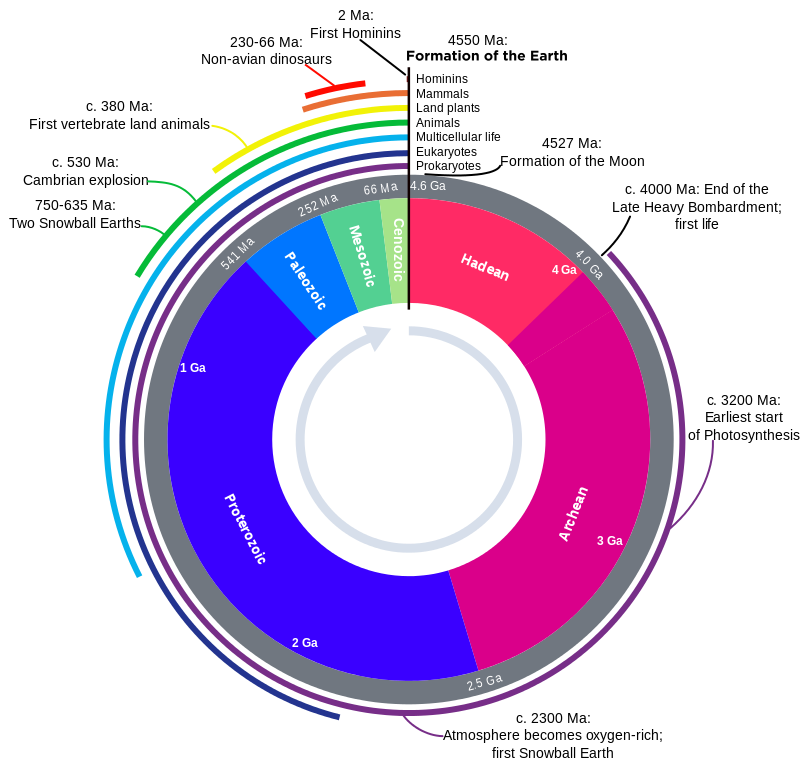Planet Earth: An Introduction

Earth is 4.543 billion years old. That’s 4,543,000,000 years, an amount of time so immense that it’s challenging to grasp just how long it is. To put this into perspective, if the average human lifespan is 80 years, the Earth has been around for 57,000,000 lifetimes. Or if you have a penny for every year the Earth has been around, you would have $45.4 million! Constantly writing out millions and billions of years is time-consuming, so geologists use a few abbreviations when talking about ages. The symbols ka (thousands), Ma (millions), and Ga (billions) refer to points in time like a date. For example, the dinosaur extinction occurred at 66 Ma. Geologists also use other abbreviations for lengths of time, including ky, kya, kyr, and k.y. for thousands of years; my, mya, myr, and m.y. for millions of years; and by, bya, byr, and b.y. for billions of years. All four varieties of abbreviations mean the same thing in this case. Here, you would say the dinosaurs have been extinct for 66 myr. If this sounds confusing, you’re not alone because even some geologists use all of the abbreviations interchangeably. There is a debate amongst geologists, and other sciences, over the notation used for geologic time.
Fun fact: The Tyrannosaurus rex was one of the last dinosaurs to evolve, about 70.6 Ma (a specific date). The first dinosaurs evolved about 230 Ma (a specific date), 159 myr (a length of time) before T-rex evolved. We are closer in time to the T-rex than the T-rex is to its earliest dinosaur ancestor! See the difference in abbreviations yet?
Entire courses and careers have been based on the wide-ranging topics covering Earth’s history. Throughout the long history of Earth, change has been the norm. Looking back in time, an untrained eye would see many unfamiliar life forms and terrains. The main topics studied in Earth history are paleogeography, paleontology, paleoecology, and paleoclimatology—respectively, past landscapes, organisms, ecosystems, and environments. This chapter will cover (briefly) the origin of the universe, how we organize Earth’s immense 4.543 billion-year history, and how we understand Earth as a balanced system throughout that time.

